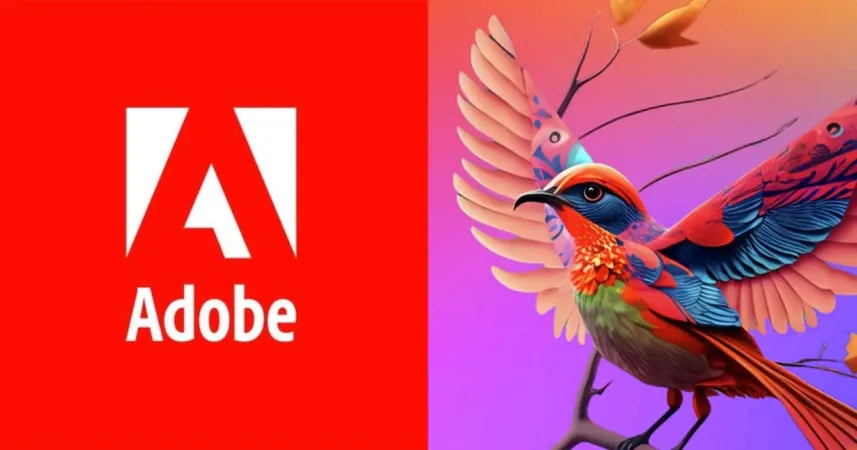
Adobe's Bold AI Strategy: Artists Must Adapt or Risk Obscurity!
2024-10-28
Author: Wei
Introduction
In the rapidly evolving world of technology, Adobe finds itself at the crossroads of innovation and tradition. Since the surge of artificial intelligence in 2022, the company behind Photoshop and Substance 3D has had to navigate the choppy waters of an industry in turmoil. At the heart of this turbulence lies a growing divide between tech leaders and an increasingly skeptical community of digital artists, many of whom view AI with disdain.
Adobe's Generative AI Vision
In a compelling interview with The Verge, Adobe’s Vice President of Generative AI, Alexandru Costin, did not mince words. He emphasized that artists who resist embracing generative AI are unlikely to thrive in what he calls the 'new world.' Costin disclosed that all upcoming Adobe software tools will be integrated with AI capabilities, effectively rendering traditional workflows obsolete. This bold assertion raises the stakes for artists who may feel pressured to incorporate tools that they find impractical or even unwelcome.
The Company’s Strategic Commitment
Echoing Costin's sentiments, David Wadhwani, President of Digital Media at Adobe, reinforced the company's unwavering commitment to a future dominated by AI. He acknowledged the backlash surrounding generative AI but insisted that Adobe's strategy is designed for success in both the short and long term. Wadhwani argued that while generative AI may churn out content that some dismiss as mere 'slop,' the reality is that true craftsmanship and creativity will only become more valuable in the future.
Financial Implications of AI
Moreover, Wadhwani's remarks hinted at a financial motive behind the company’s pivot toward generative AI. He noted that features powered by Firefly, Adobe's generative AI initiative, have been among the most rapidly adopted in the company’s history, mirroring trends seen in the gaming industry where revenue can often contradict player satisfaction. Essentially, it seems Adobe is leveraging AI not only as a tool for creativity but as a significant profit driver.
The Backlash Against Adobe's AI Policies
This aggressive embrace of AI has not come without repercussions. In June, Adobe faced intense backlash after modifying its General Terms of Use, which allowed the company access to user creations for analysis, including machine learning. Although Adobe later clarified that it does not intend to exploit user-generated content for training AI models, the damage was done. Many creators remain apprehensive, fearing their works could be used to bolster AI systems that compete with their own artistic endeavors.
Conclusion
As Adobe plows forward with its AI initiatives, the message is clear: artists who wish to stay relevant must adapt. For many, this perspective feels like a betrayal, as they grapple with the reality of a creative landscape increasingly dominated by algorithms. The ongoing debate around AI in art raises important questions about authenticity, creativity, and the true value of artistic expression.
Future Outlook
As we look ahead, will the art community embrace this AI-powered future, or will a backlash against technology continue to grow? Only time will tell, but one thing is for certain: those who resist change may find themselves left behind in a world where adaptation is no longer optional.
 Brasil (PT)
Brasil (PT)
 Canada (EN)
Canada (EN)
 Chile (ES)
Chile (ES)
 España (ES)
España (ES)
 France (FR)
France (FR)
 Hong Kong (EN)
Hong Kong (EN)
 Italia (IT)
Italia (IT)
 日本 (JA)
日本 (JA)
 Magyarország (HU)
Magyarország (HU)
 Norge (NO)
Norge (NO)
 Polska (PL)
Polska (PL)
 Schweiz (DE)
Schweiz (DE)
 Singapore (EN)
Singapore (EN)
 Sverige (SV)
Sverige (SV)
 Suomi (FI)
Suomi (FI)
 Türkiye (TR)
Türkiye (TR)